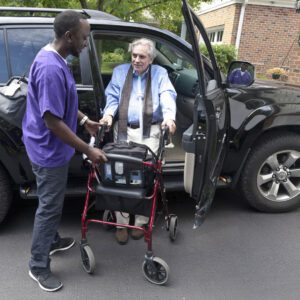
Traveling with our medically complex patients requires planning and preparation. If you’re taking a trip this summer, be sure to contact your home nursing agency, as well as your physician and medical equipment provider. We always recommend patients carry a current prescription for their medical equipment to assist when passing through security check points at the airport and if any medical need arises during travel.
Whether you’re taking a road trip or taking flight this summer, please keep in mind the following travel tips:
Car Travel
- Access to emergency equipment supplies should be within an arm’s reach. (The trunk won’t do!)
- Make sure your equipment is fully charged. If it’s a long drive, be sure to pack car adaptive chargers to recharge the equipment along the way.
- It is the nurse’s responsibility to make sure the patient is safe—secure in a car seat, wheelchair tie-downs, wheelchair seat belts, etc.
- Prepare for the worst, whether it’s getting stuck in traffic, a car accident, or breaking down on the side of the road.
Air Travel
- Call the airline about the medical needs before purchasing the plane ticket. Each airline has separate rules about the type of medical support it allows during a flight; however, most major airlines will accommodate medical equipment needs if you allow them the time to process the request(s).
- Specify what type of seating is required, as well as whether the nurse or family member needs to sit adjacent to them.
- Identify all required medical needs at security checkpoints and the gate. For example, they probably can accommodate your wheelchair, liquids, etc.
- Each airline has its own policy regarding travel with oxygen and the FAA has specific travel requirements for battery duration on ventilators.
- Anticipate multiple transfers out of the wheelchair when boarding your flight. For example, you may need to transfer to a special wheelchair that can fit in between the airplane’s aisles. In most cases, your personal wheelchair can only be taken to the end of the boarding bridge.
- Do not stow or check your emergency supplies. They should always be within arm’s reach (under your seat, with you, etc.)
- If specialized oxygen tanks are needed per the airline, work with your medical equipment provider in advance to ensure you have the acceptable equipment.
- Please remember that the air on board the plane is extremely dry; be prepared to provide additional humidity.
- Plan for delays and carry extra supplies to ensure sufficient life-saving equipment and supplies are available.
These are just a few of our travel trips! Where are you going with your patient this summer? And how are you planning to prepare?
